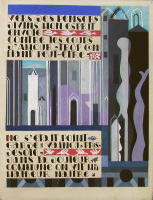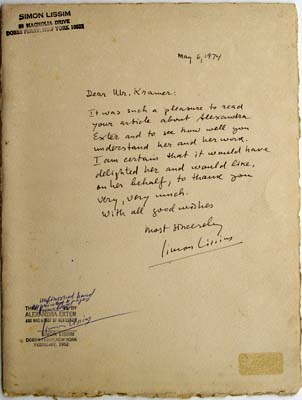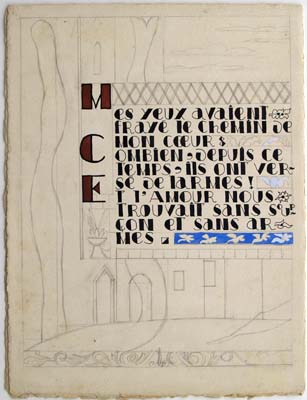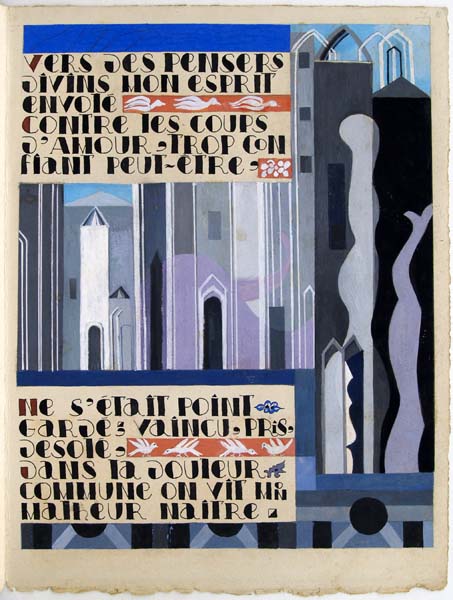|
Alexandra Exter (1882 - 1949) |
6646 | |||
 |
Petrarch Third sonnet Paris: [1945] 336 x 254 mm. 4 pages Unique copy
|
|
In 1945 Alexandra Exter began work on an illuminated manuscript of Petrarch's sonnets, with calligraphy by Giņ Colucci. For some reason, this manuscript was never completed. Upon Exter's death, the fragment passed (along with the rest of Exter's effects) to Simon Lissim, her heir. Lissim devoted himself to establishing Exter's reputation, and in order to accomplish that goal he presented Exter's work to public institutions and to various influential individuals. At least two bifolia of the Petrarch manuscript survive. For some reason, Lissim separated them. Perhaps he was not aware that they belonged to the same manuscript; perhaps he felt that since the manuscript was not complete, there was no reason to keep them together. He gave one bifolium to art critic Hilton Kramer on May 6, 1974. The previous day, Kramer's article, "Bringing Cubism to the Stage", had appeared in the New York Times. Kramer discussed Exter's work in that article. This bifolium features a free translation of Petrarch's Third Sonnet ("Era il giorno ch'al sol si scoloraro....") He gave another bifolium to the Cooper-Hewitt Museum in New York (call number 1975-38-2-1/2). This bifolium, fortunately, includes the title-page. It was featured in an exhibition, "Writing and Reading", during the fall of 1981. In a review of the exhibition (published November 22, 1981), the New York Times critic wrote, "There is a particularly wonderful page designed by Alexandra Exter and Gio Colucci in Paris in 1945 for an edition of Petrarch's 'Sonnets.'" This is, of course, a rather inaccurate comment: it is not a "page", but rather a bifolium, and it was not designed for an "edition". Here's the strange part: the art critic who reviewed the "Writing and Reading" show at the Cooper-Hewitt was none other than...Hilton Kramer! Although the Exter bifolium caught his eye, he did not realize that he himself had owned another fragment of the same manuscript for over 7 years! Since the style of the two fragments is rather similar, this was quite an oversight. (William Cole, art dealer, Sitges 2008).
References: J. Chauvelin and N. Filatoff 2003, pp. 367-403 |
|


